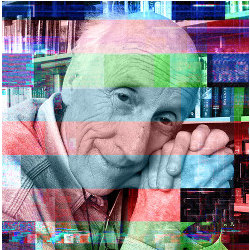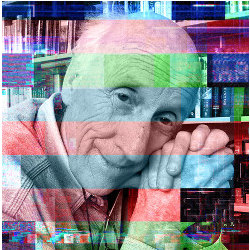
During the fall of 2000 I visited the Special Collection room in Green Library at Stanford University, eager to read Stewart Brand’s personal journals. I was researching the political and cultural world surrounding three computer science laboratories that were located adjacent to Stanford during the decade during which the technologies that led to the creation of the personal computer industry and the modern Internet emerged.
On my initial visit I came away disappointed and it would take almost another two decades before I discovered a missing piece of the puzzle that reframes the early history and impact of Silicon Valley.
Although he was not a technologist, Brand, the creator of the Whole Earth Catalog, is an intriguing figure in the history of the modern computing world and the Valley. He was the author of a seminal article in Rolling Stone magazine, “Space War: Fanatic Life and Symbolic Death Among the Computer Bums,” which had been the first hint a wider non-technical audience had of the emerging digital world. He would be the first writer to use the term “personal computer” in his 1974 book II Cybernetic Frontiers. A decade later Brand would help organize the first Hackers conference as well as establishing an early online community known as the Whole Earth ‘Lectronic Link (WELL).
William English, who was chief engineer for Douglas Engelbart’s legendary oNLine System (NLS) project at Stanford Research Institute told me that he invited Brand to participate in the demonstration that Engelbart was preparing to give at the ACM/IEEE Joint Fall Computer Conference held in San Francisco in December 1968. English had seen an early multimedia (at that time “multimedia” meant three slide projectors, an audio tape, and a single shared projection screen) production Brand created titled “America Needs Indians,” and wanted his expertise to help prepare for the watershed event that Steven Levy would later describe as “The Mother of All Demos.”
Brand would operate a camera in Menlo Park, relaying a video feed to the stage where Engelbart sat in front of a huge screen with a keyboard, mouse and chord keypad, introducing the world’s leading computer scientists and engineers to interactive computing.
Later, however, I realized that Brand’s actual role in helping prepare for the Demo had been minimal and I found no mention of the event in his journal, which at that point was filled with observations more in tune with a 30-year-old in the midst of the turmoil of the Vietnam War and the 1960s counterculture.
Although Brand had been a prominent figure during the 1960s and 1970s, he was famously resurrected by Steve Jobs in his 2005 Stanford Commencement speech when he commended Brand’s philosophy of life highlighted on the closing page of The Whole Earth Epilog to the new graduates: “Stay Hungry, Stay Foolish.”
He might have remained a historical figure, however in 2017, with Donald Trump’s election, the national zeitgeist shifted abruptly and Silicon Valley went from being able to do no wrong, to doing no right. Two books that appeared that year, Franklin Feuer’s World Without Mind: The Existential Threat of Big Tech and Jonathan Taplin’s Move Fast and Break Things: How Facebook, Google, and Amazon Cornered Culture and Undermined Democracy both opened their accounts of Silicon Valley with biographical sketches describing Brand as Silicon Valley’s first “digital utopian.” Feuer and Taplin, and the following year the historian Jill Lapore in These Truths: A History of the United States, all attempt to make the case that there is a straight cultural through-line from Brand to an unregulated Silicon Valley that has brought about the perilous state of the world today—underscored by the role of social media and the Internet in fomenting both Brexit and the election of Donald Trump.
They all make the claim that the Valley’s original ideology—or sin depending on your point of view—can be traced back to Brand and the Catalog, expanding on his opening argument in the Catalog: “We are as gods and might as well get good at it. A realm of intimate, personal power is developing—power of the individual to conduct his own education, find his own inspiration, shape his own environment, and share his adventure with whoever is interested.”
Although he was not a technologist, Stewart Brand is an intriguing figure in the history of the modern computing world.
Taplin, correctly I believe, distinguishes between Brand’s original (pre-digital) “utopianism” (a label that still makes Brand wince) and a later libertarian Silicon Valley generation when he writes: “By the late 1980s, starting with eventual PayPal founder Peter Thiel’s class at Stanford University, the dominant philosophy of Silicon Valley would be based far more heavily on the radical libertarian ideology of Ayn Rand than the commune-based principles of Ken Kesey and Stewart Brand.”
It is a mistake to focus on the fact that some parts of Silicon Valley absorbed a neoliberal ideology and neglect the fact that the Catalog, which was created as part the same hot-house culture and in the same place and at the same time that Silicon Valley was being created, influenced the entire Baby Boomer generation. It was not just Steve Jobs. Over and over again while I was researching and writing I would run into people who had found something in the Catalog that caused their lives to veer off in new directions. It helped create that Sixties generation ideal, which was described to me by Kevin Kelly as the sense that “you could invent your own life.”
Brand’s magnum opus grew directly from the same forces—technological, political and culture—that were shaping the region in the second half of the 1960s.
The idea the Catalog emerged from the same forces that birthed Silicon Valley became clear to me in 2018, when Brand handed me a journal he had not originally contributed to the Stanford collection of his papers in 2000. Uncovered in the backroom of his Sausalito office, he was not certain why he had not donated it earlier, but it is a separate account of one of his failures. Before deciding to create the Whole Earth Truck Store and Catalog, beginning in 1967 Brand and his first wife Lois Jennings spent almost a half year attempting to organize an educational technology fair that was supposed to take place at the San Mateo County Fairgrounds. (The funding proposal for the event reads almost exactly like a description of the Maker Faire, which would finally take place at the Fairgrounds almost four decades later.)
Brand is known for having had an unusual ability to discern interesting societal trends early on, and it is intriguing that just as the back-to-the-land movement gained momentum, he decided instead to move to Menlo Park, CA, “to let my technology happen here” as he wrote in his journal.
He had come to Dick Raymond, an economist and urban planner who had created the Portola Institute, a recently established incubator for new educational projects, with the vague idea of finding a job in what he saw as a booming region. The education technology fair was Raymond’s idea based on an earlier event created by Michael Phillips, an innovative San Francisco banker, that had been held at San Francisco State College.
However, Brand was unable to raise money for the fair, and in the spring of 1968 he pivoted to the idea of a mobile “truck store” and catalog to share information and technology with his friends who were creating communes in rural America.
Shortly after beginning his new project, he decided to name his planned compendium the Whole Earth Catalog, in a nod to a crusade that he had embarked two years earlier, when he publicly asked: “Why haven’t we seen a photograph of the whole Earth yet?” In the fall of 1968, the first Catalog featured a photo of the Earth from space. He would subtitle it: “Access to Tools.”
If you ask Brand where that moniker came from he will tell you he was simply channeling Buckminster Fuller, the inventor of the geodesic dome. Brand had attended a series of Fuller’s lectures in San Jose several years earlier and took the idiosyncratic inventor’s credo to heart: “If you want to teach people a new way of thinking, don’t bother trying to teach them. Instead, give them a tool, the use of which will lead to new ways of thinking.”
In the journal that Brand kept from August 1967 to February 1968, however, I found a second significant influence, which helped shape Brand’s thinking about tools. The pages of his notebook reveal a much closer connection between Brand and Engelbart than he remembered during our interviews. Engelbart, of course, was in the midst of inspiring what would become the most universal of all tools, as conceived by Alan Kay, the personal computer.
It is clear that Engelbart’s influence on Brand was significant. Enough so that he in effect became an early acolyte of the pioneering computer scientist who envisioned that computers would be tools used to augment the human mind, what he called “intelligence augmentation,” or IA, in contrast to AI.
Not only did he introduce Brand to the notion of “bootstrapping,” his notion of how to accelerate the gathering of knowledge and scientific discovery, he explained the concept of semiconductor scaling as well. Engelbart had been the first to describe the principle that would later be called “Moore’s Law” in 1960 in a presentation he made at the International Circuits Conference. Moore would codify the idea of exponential scaling five years later in Electronics, but it was Engelbart’s insight initially.
Brand is known for having had an unusual ability to discern interesting societal trends early on.
All of this was communicated to Brand in 1967 and 1968, and I realized those who try to argue that the Whole Earth Catalog is some kind of Ur-document defining Silicon Valley culture and ideology have it just backward. The reality is that Brand’s magnum opus grew directly from the same forces—technological, political, and cultural—that were shaping the region in the second half of the 1960s.
It was not a neoliberal idea at all. It was the same spirit that captivated a young Steve Jobs. It spread the mindset of a young hitchhiker standing on a California highway open to both adventure and possibility. The Catalog was a pro-technology harbinger that penetrated deeply into the consciousness of the American baby boomer generation just as Silicon Valley was being formed.

Figure. Watch the author discuss this work in the exclusive Communications video. https://cacm.acm.org/videos/rethinking-silicon-valley




Join the Discussion (0)
Become a Member or Sign In to Post a Comment